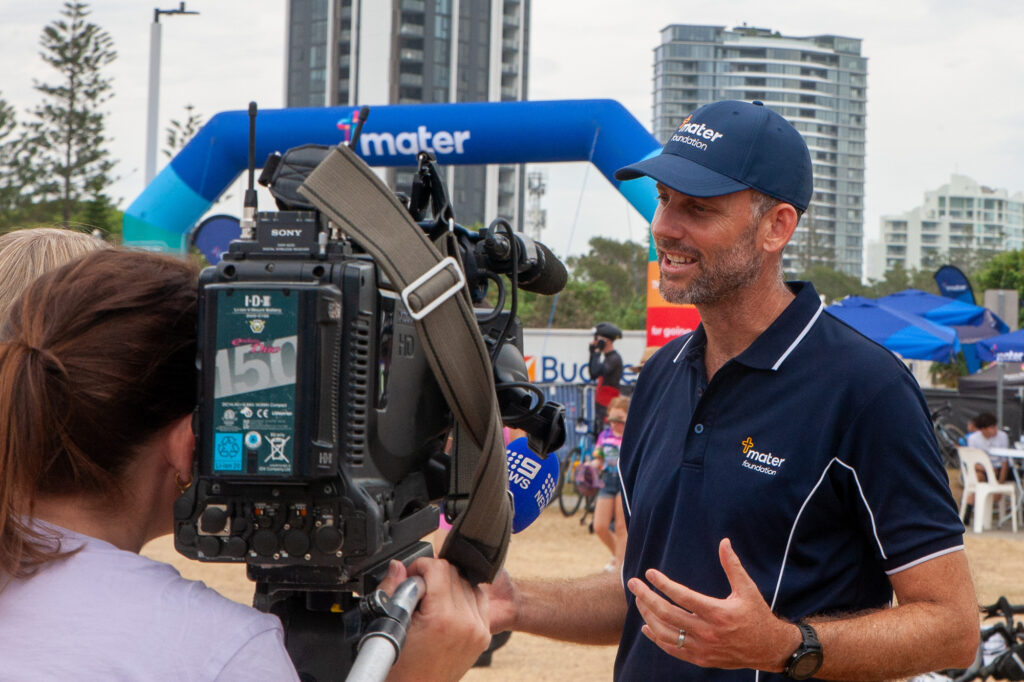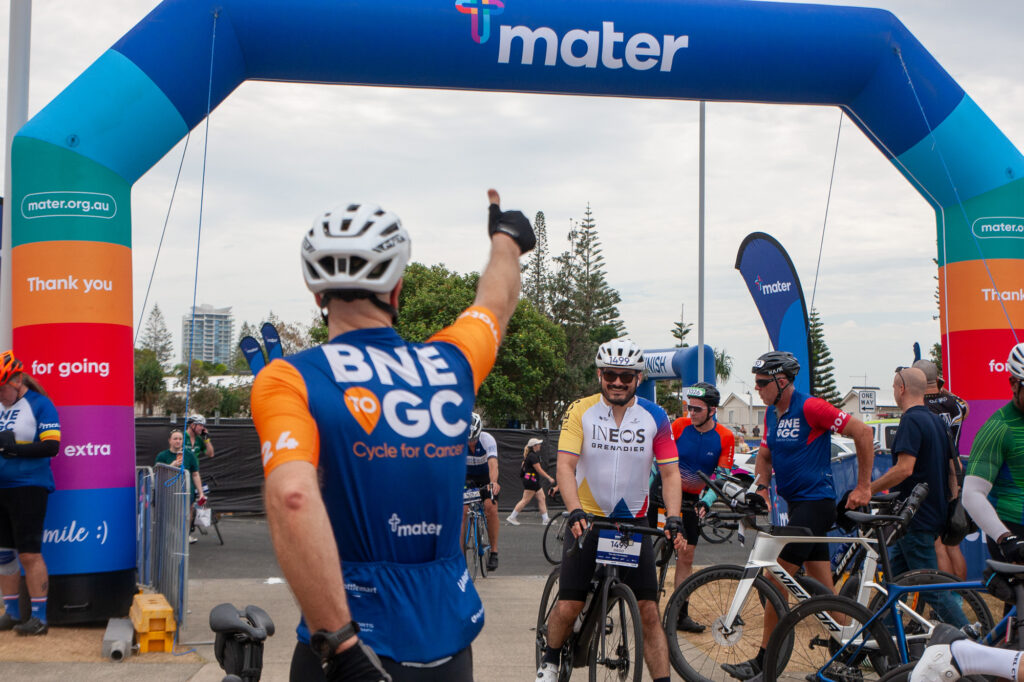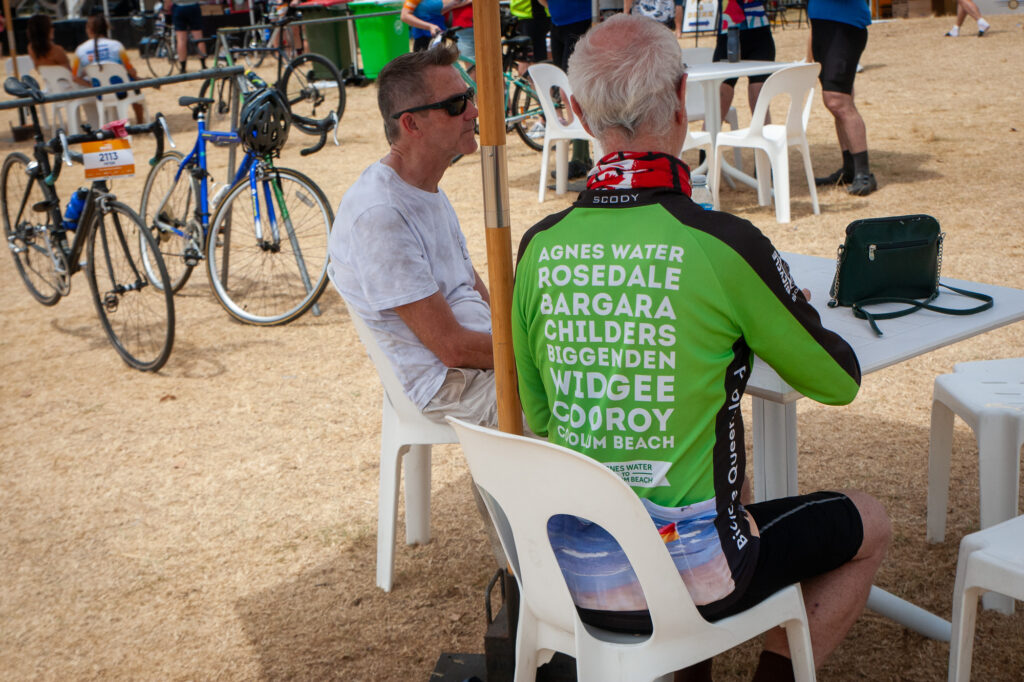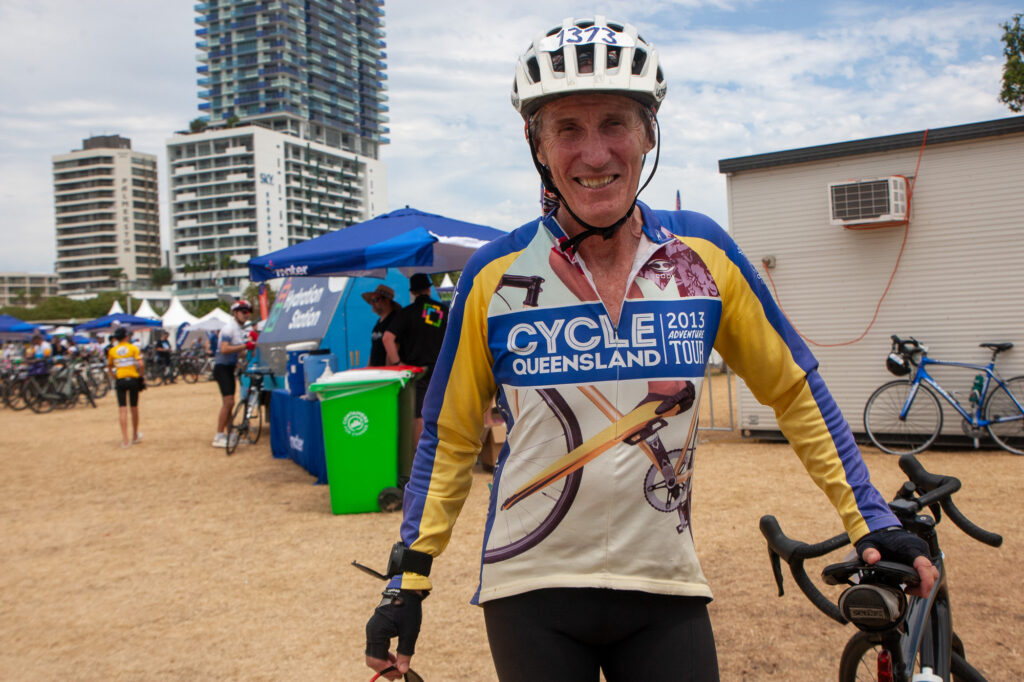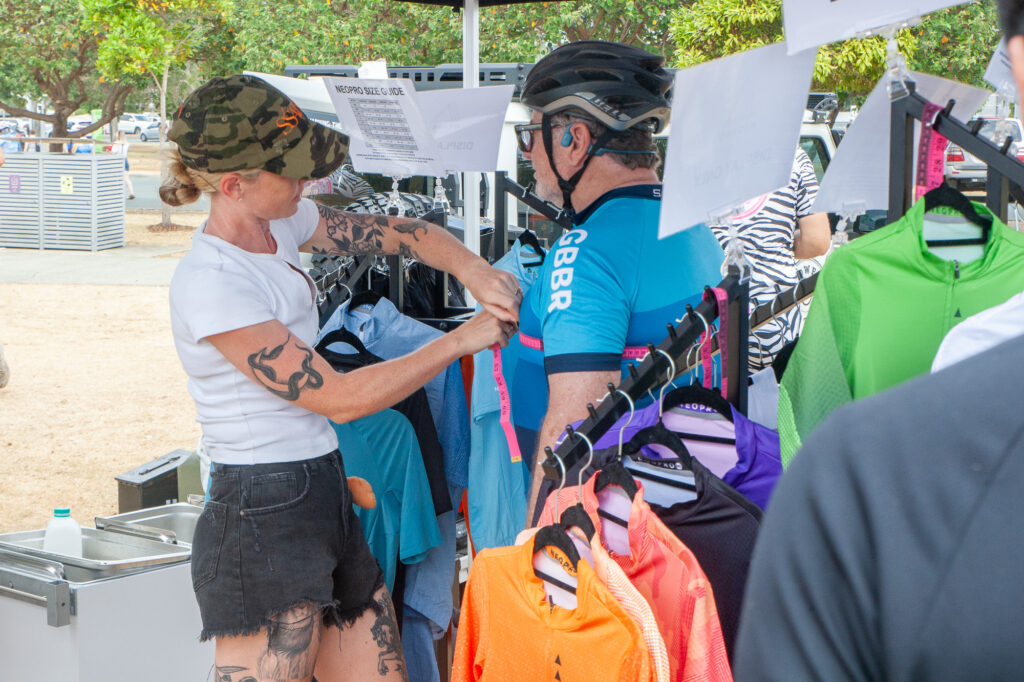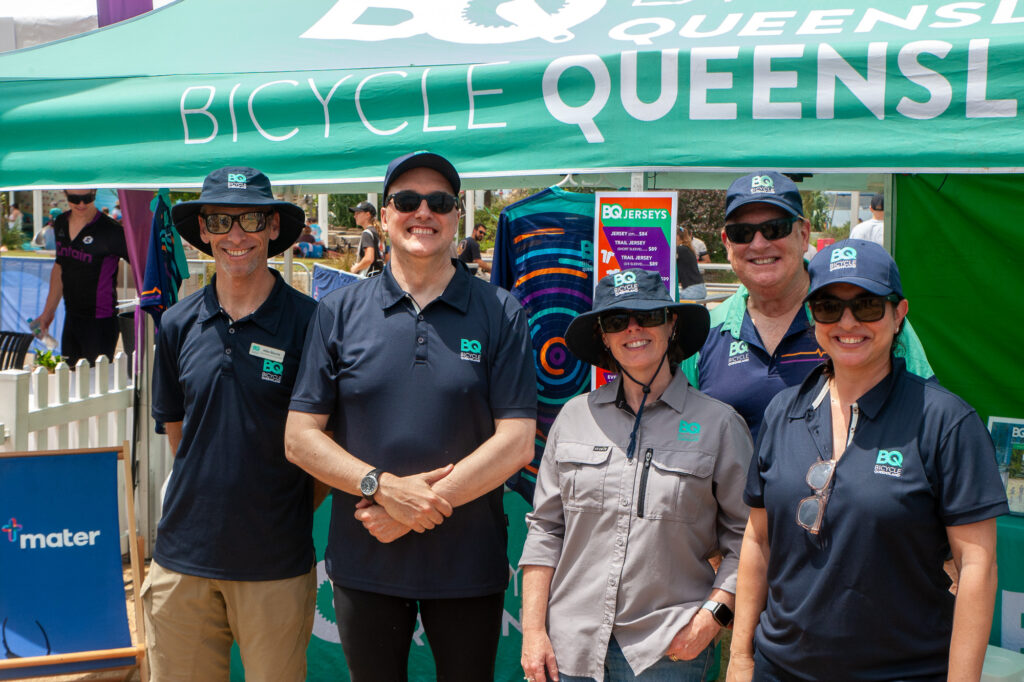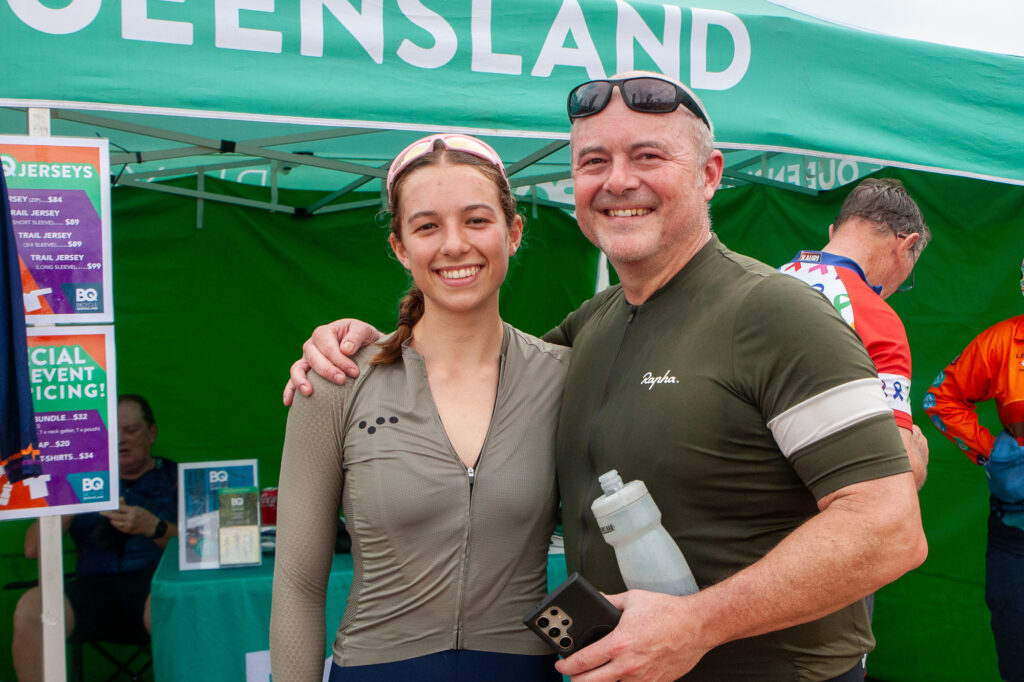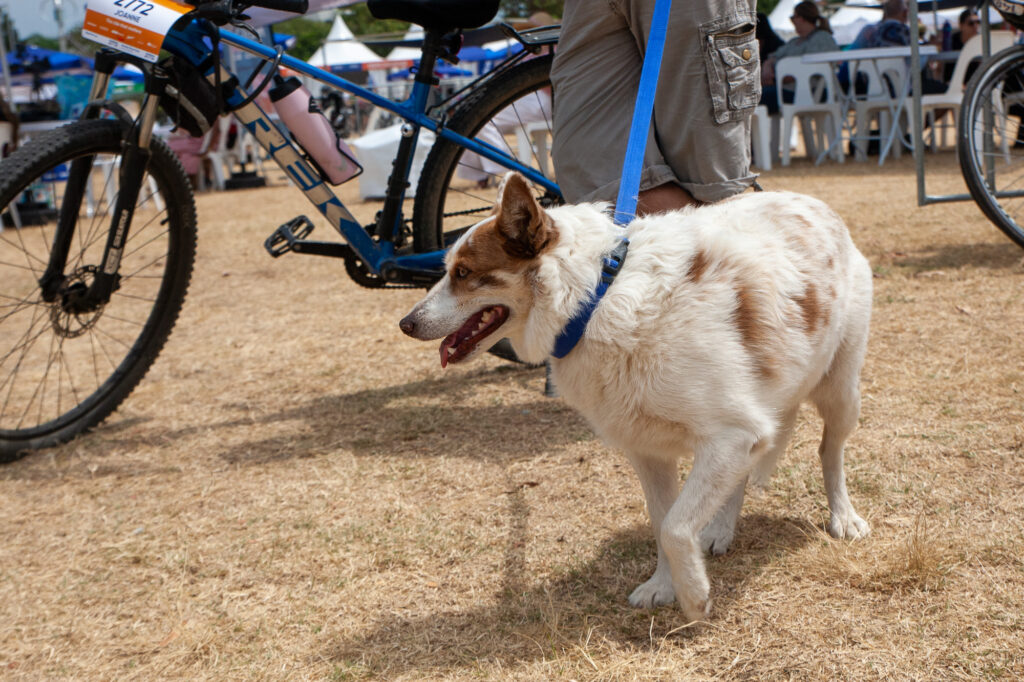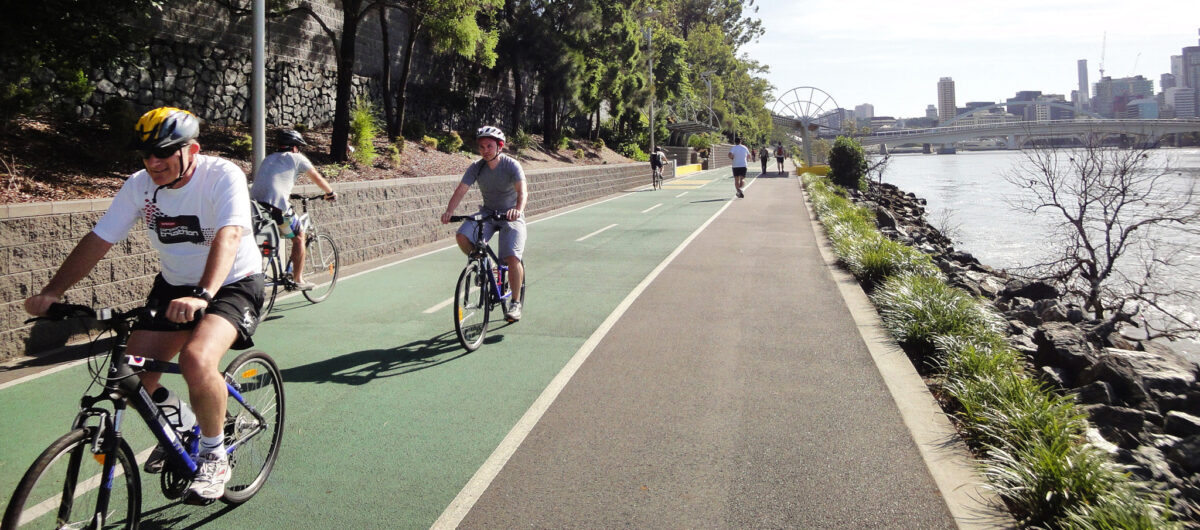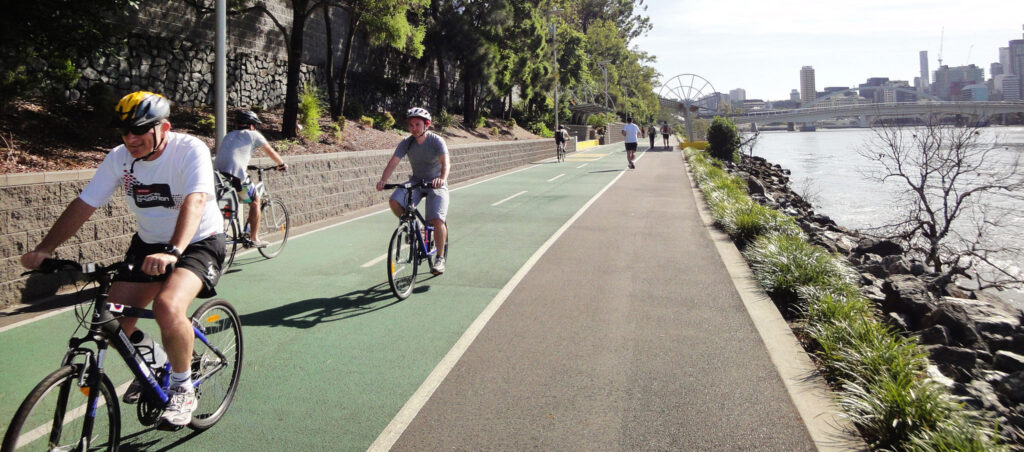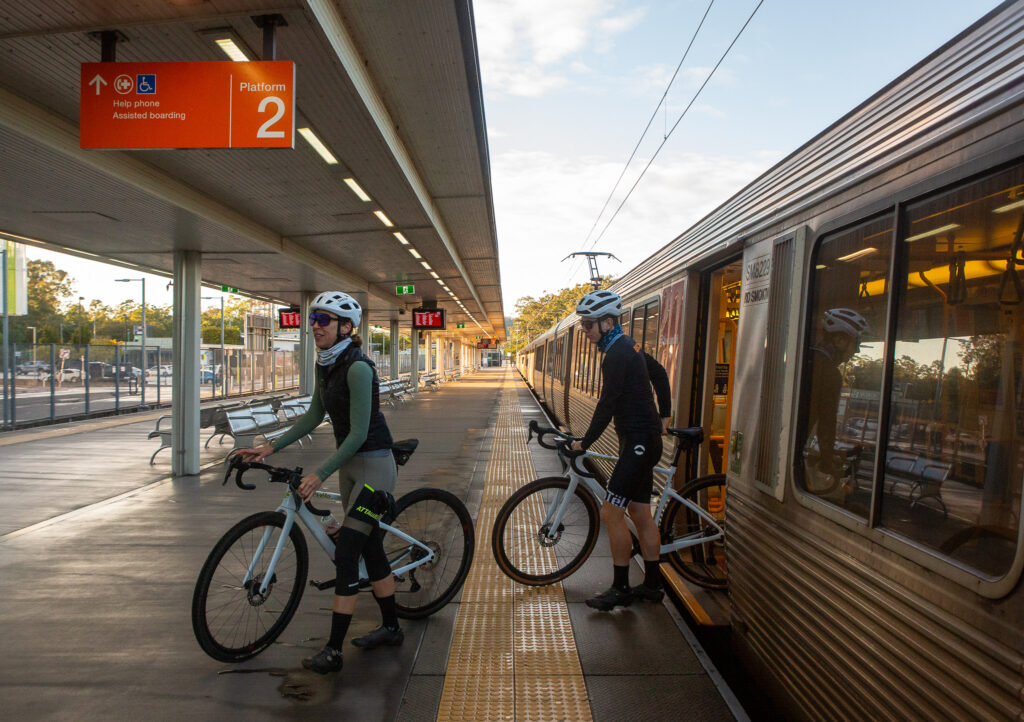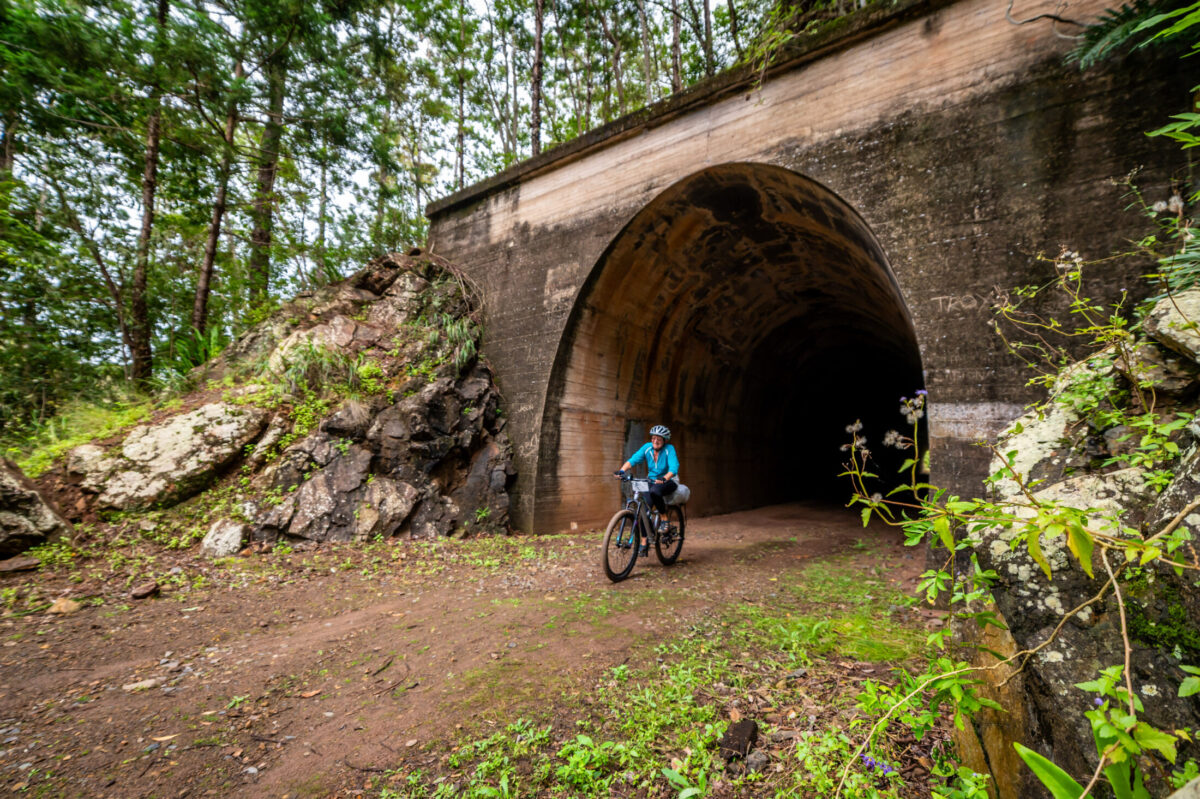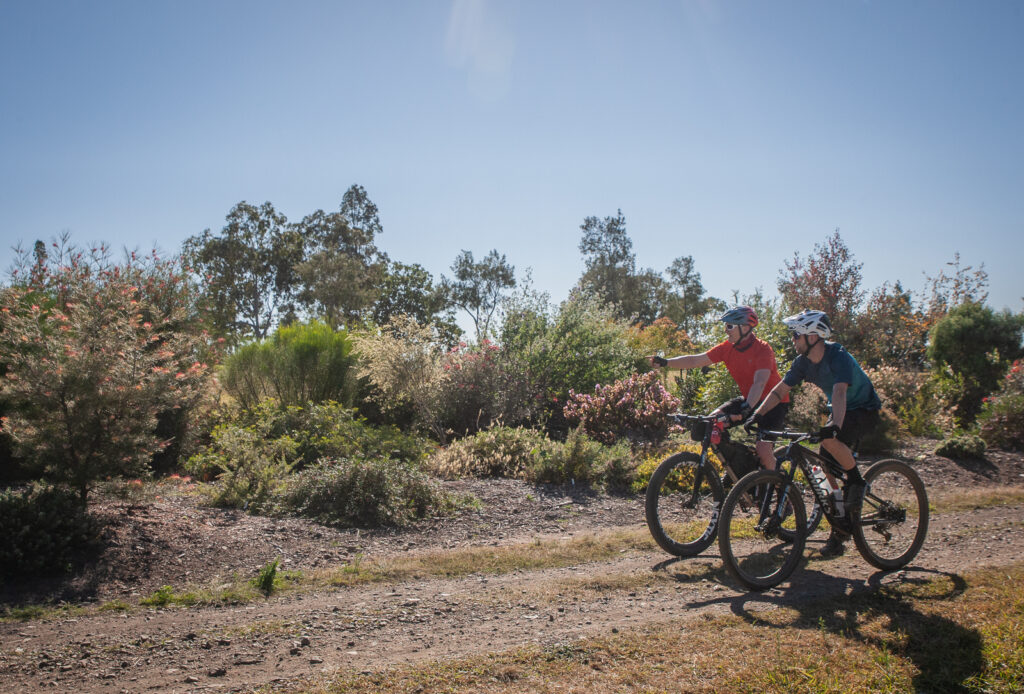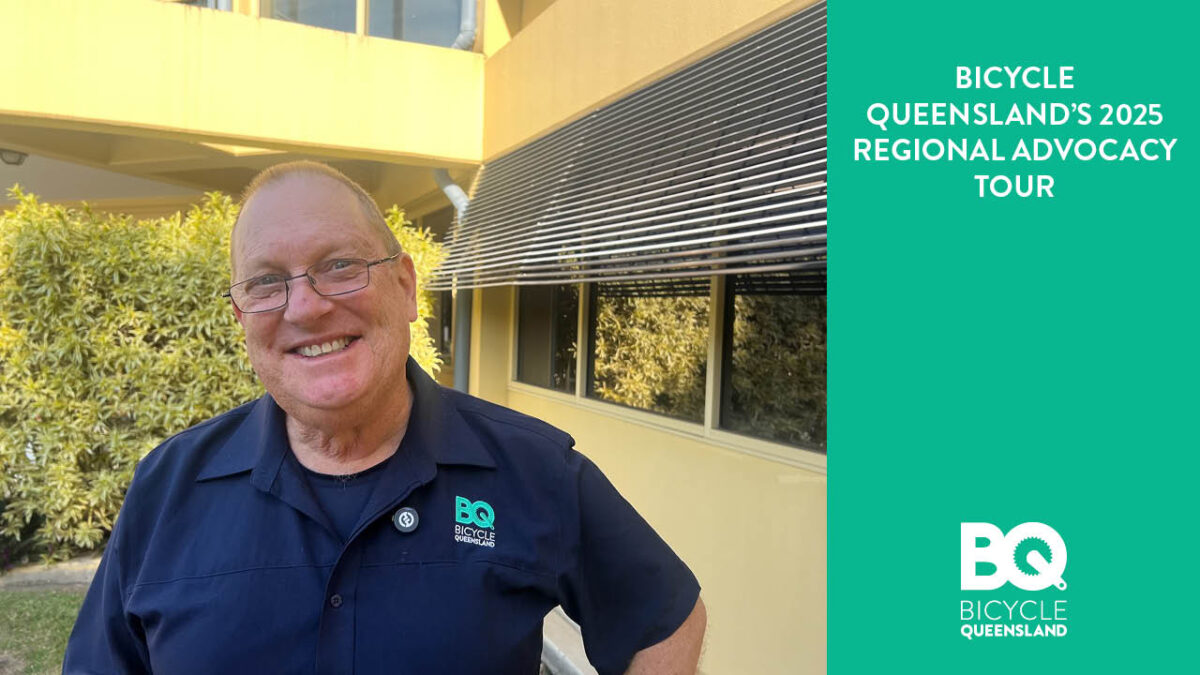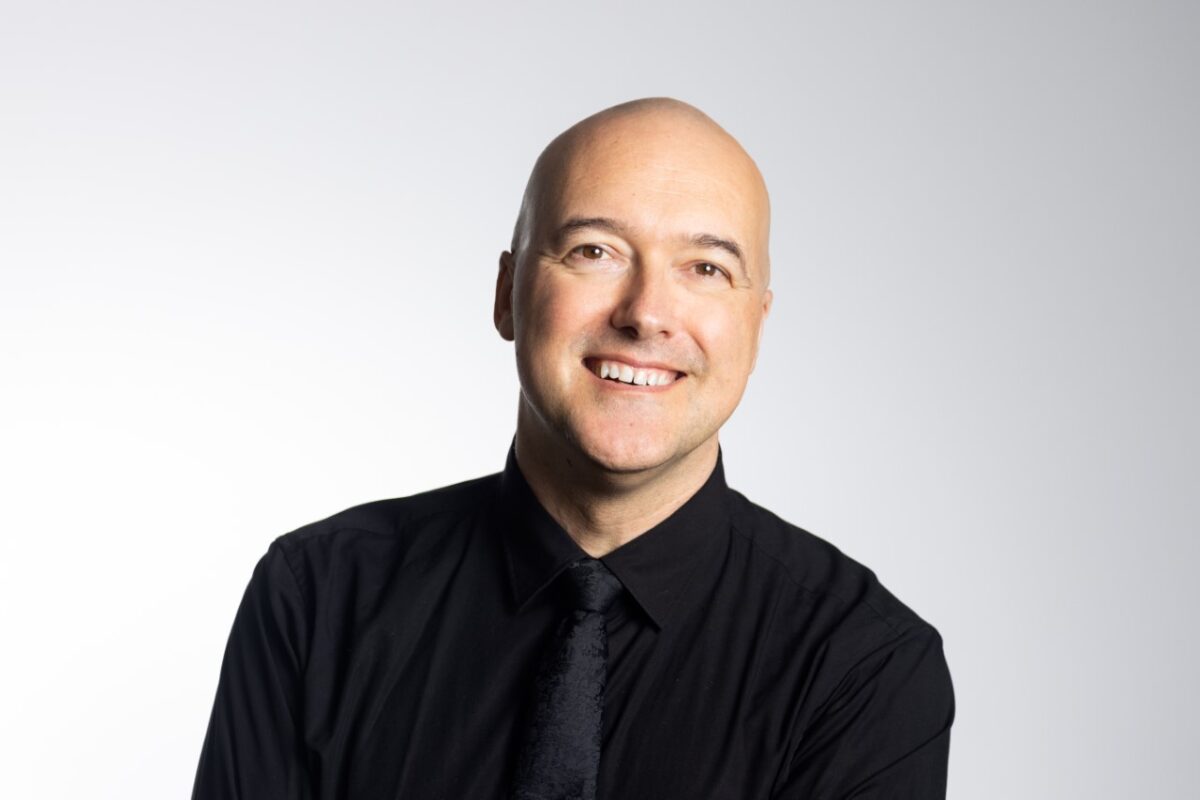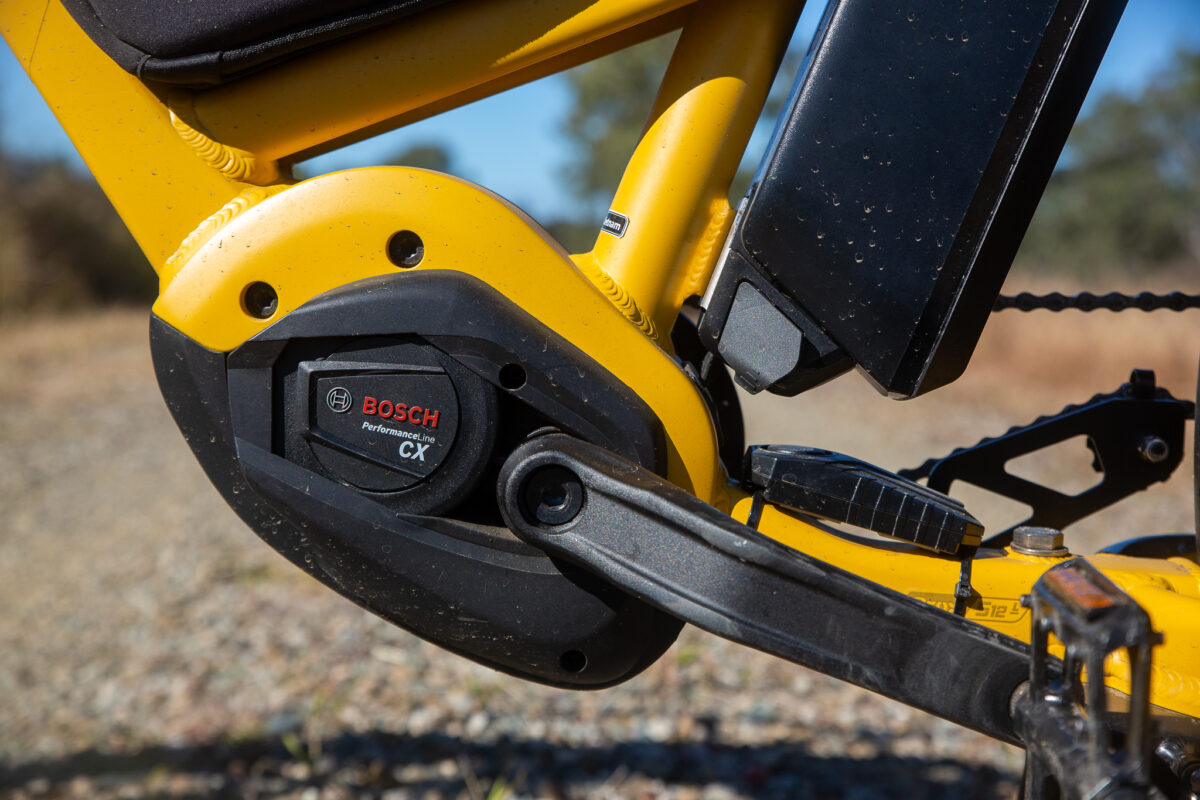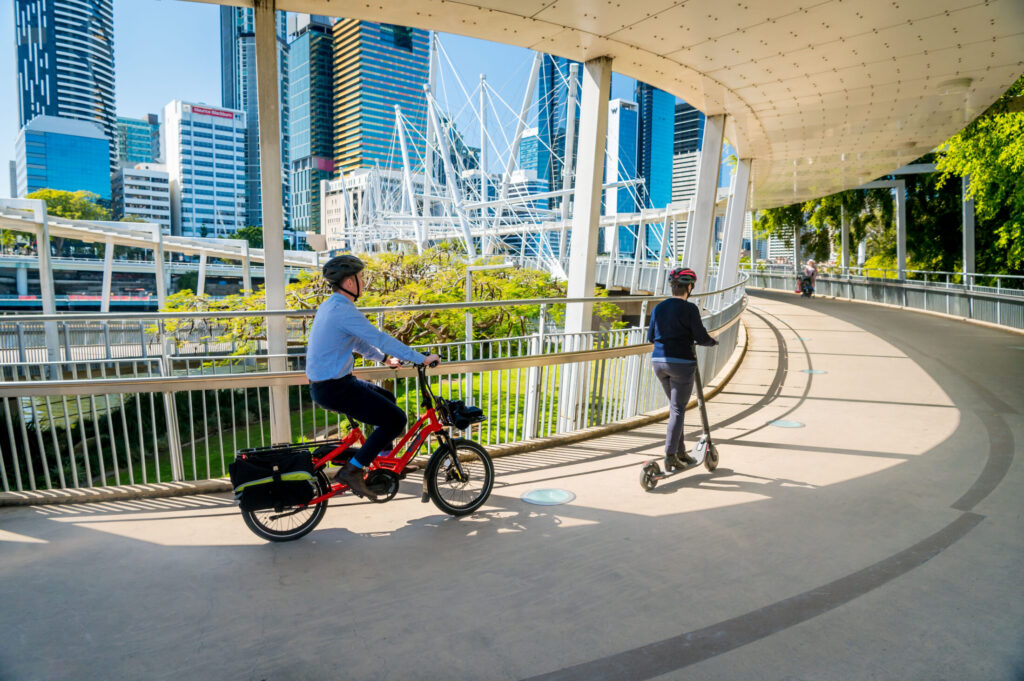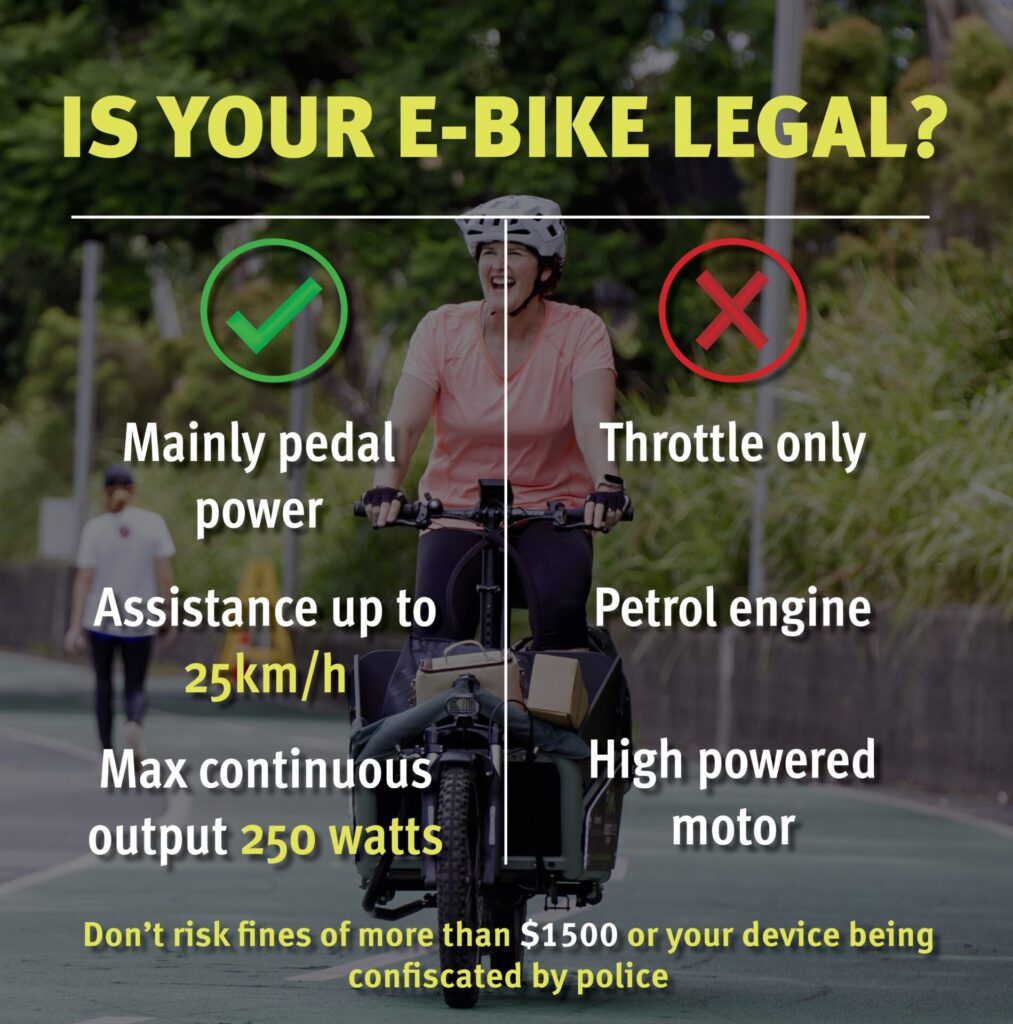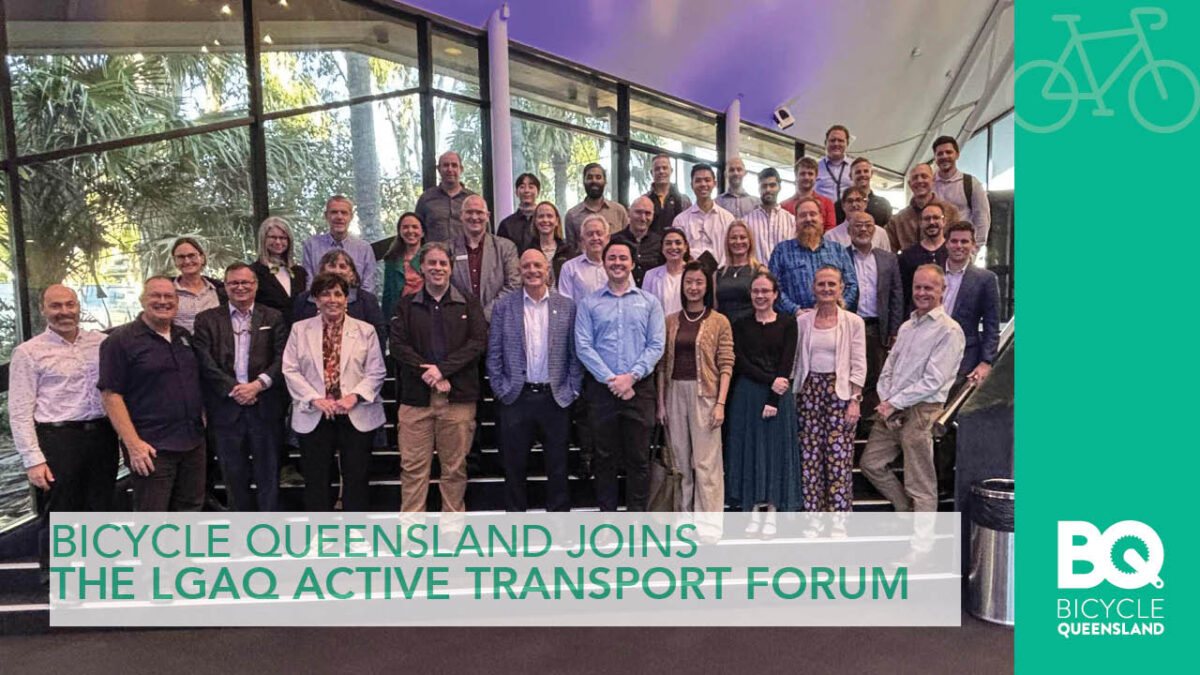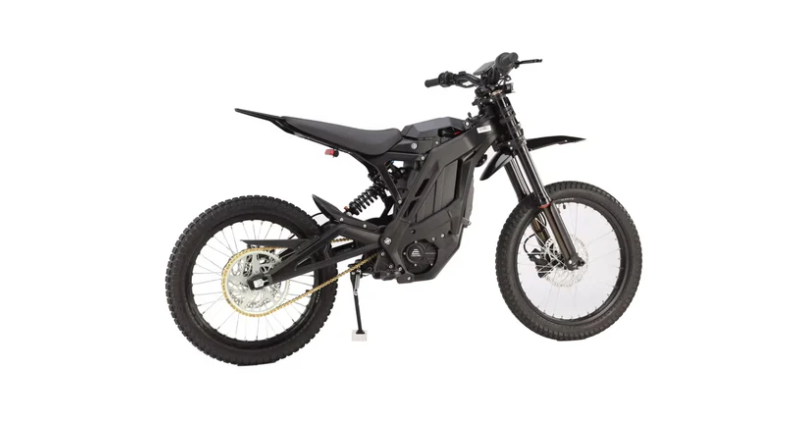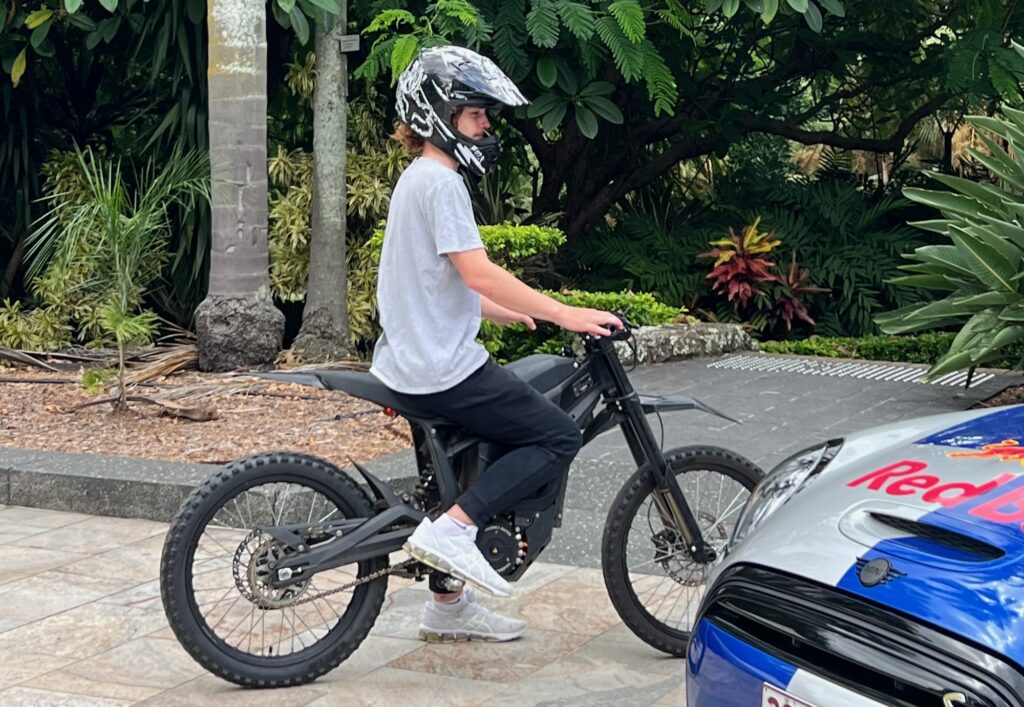Bicycle Queensland’s Director of Advocacy, Andrew Demack, has just completed the first week of a regional advocacy tour through central Queensland. Across seven stops – Mackay, Yeppoon, Rockhampton, Gladstone, Bundaberg, Hervey Bay and Gympie – Andrew met with BQ members, community groups, councillors and riders to hear about local opportunities and challenges for cycling.
The forums highlighted strong grassroots commitment, creative ideas, and a clear need for better coordination and support between councils, state government, and community groups.
Mackay
“Mackay was a really positive meeting,” Andrew said. “We had two councillors, Alison Jones and Ash-lee Johnson, plus representatives from the mountain bike club, the Pioneer Valley Rail Trail crew, and long-term advocates like Peter McCallum and Liz Crane. It was a strong cycling group with lots of experience in the room.”
The standout issue was support for the Pioneer Valley Rail Trail. “There’s so much community energy there, but the hard yards are being done by volunteers. What’s really needed is more tangible support from Mackay Regional Council.” Since the meeting the Queensland Government has announced $75,000 funding for the Pioneer Valley Rail Trail.
Bicycle Queensland often see opportunities to link rail trails with existing mountain bike parks, and that is especially with the Pioneer Valley Rail Trail and Finch Hatton Mountain Bike Park. “There’s great potential where these projects connect,” Andrew said.
On transport, the councillors present expressed support for a greater focus on walking and cycling, though resources remain tight – as is the case with most councils. “But the active transport strategy they’re developing could help realise some of that potential.”
School travel was another concern. “There was a lot of discussion about how kids get to school and the importance of keeping them active in their local area.”
Yeppoon
The Yeppoon forum was small but enthusiastic. “We only had a few people, but they were passionate about the Pineapple Trail – the proposed rail trail from Yeppoon towards Rockhampton,” Andrew explained.
At present the trail finishes at the edge of the golf course in Yeppoon, but with relatively little extra work it could reach Mount Chalmers, about a third of the way to Rockhampton.
“The people there were really supportive. Livingstone Council has done pretty well with their coastal pathway network in recent years, so there’s been progress. But the Pineapple Trail is still unrealised potential.”
Livingstone Council is smaller than Rockhampton, and the trail sits mostly in Livingstone. BQ believes that significant interest from Rockhampton Council would be needed to see further progress.
The Queensland Government’s recent announcement for investment in regional rail trails as part of their 2045 tourism strategy is welcome news. While the Pineapple Trail wasn’t one of the four rail trail projects to receive funding, it shows the strategic plan from the government is on the right track.
Rockhampton
Rockhampton’s mountain bike community continues to impress us here at BQ.
“The Rocky Mountain Bike Club is putting in 400 hours of volunteer trail care at First Turkey – and that’s per quarter,” Andrew said. “They’ve doubled the hours they recorded last year, partly because they’re tracking it better, but also because they’re doing a huge amount of work.”
The club is also close to securing funding for a trailhead. “It’s about equitable access,” Andrew explained. “People need a place to change, toilets, basic sporting amenities – not just having to sit in a car park. They’re looking at Sport and Rec funding for the trailhead, and hopefully Rockhampton Council will do the car park alongside it.”
Council was represented at the forum and expressed support. “Cycle 4 Life has representation on the council’s walking and cycling reference committee, so they’ve got a voice. Rockhampton has the bones of a good shared path network – but it could be better.”
Gladstone
In Gladstone, discussion turned to both local riding conditions and the Boyne Burnett Inland Rail Trail. “We had people from council, sport, local riders, and some engaged with the rail trail,” Andrew said.
One intriguing proposal was to repurpose a disused rail corridor leading from the port through town. “It could be a really good off-road shared path through the heart of Gladstone. The corridor’s owned by the Port Authority, but it’s no longer used. If that could be opened, it would be a game-changer for local riders.”
The Boyne Burnett Trail itself remains a unique draw – despite the timeline on it being a fully connected route being unknown.
“It’s a remote and adventurous trail,” said Andrew, talking of the potential of the trail for the future. “You’re not going to get the numbers of the Brisbane Valley Rail Trail, but it’s special. Riding through the tunnels out there is something you won’t find anywhere else. It could become an iconic stop for grey nomads and adventure riders.”
The Boyne Burnett Inland Rail Trail is one of the regional rail trails that the Queensland Government has announced further funding for, with $1.6 million for further rail trail development and improvements.
Bundaberg
Bundaberg produced a strong turnout. “We had about ten people, and as always the need for a safe route between Bundaberg and Bargara came up. It’s the old standby, a missing link that locals really want solved.”
The group also highlighted opportunities along the Coral Coast. “If you filled in just a couple of missing links, you could ride almost continuously off-road from Elliott Heads to Burnett Heads — about 35 or 40 kilometres. That’s spectacular. It would be brilliant tourism infrastructure as well as great for locals. I think they should market the whole thing as the Turtle Trail, and finish it properly.”
Concerns about children’s safety came through strongly. “Parents don’t find it safe to let their kids ride to school, and one Christian college in particular is almost impossible to access by bike. That’s disappointing.”
Andrew noted the wider issue: “New schools are being built without safe walking or riding access. State schools are better than private schools on this, but the environment around schools isn’t given the level of priority we’d like. We have to keep pushing for safe routes to school. And that includes new schools and existing ones.”
Local mountain bikers also raised the need for closer-to-home trails. “At the moment Bundaberg’s trails are half an hour away. Brad Cook from Mountain Biking Bundaberg is really pushing council to find land for trails in town, and that would be a great step.”
Here at BQ, we firmly believe that having local trails for local kids helps normalise bike riding for younger generations.
Gympie
The Gympie forum drew a broad mix of people and groups. “We had mountain bikers, road riders, the treasurer of the BMX club, and even a retired councillor who’s a BQ member. It was a really good crew.”
BMX emerged as a major strength. “The club is massive, they had 842 competitors at their state championships and expect over 1,000 in Mackay. But when kids finish BMX at 16 or 17, they often fall away from bike riding. A pump track could be a great bridge between BMX and mountain biking, helping keep young people on bikes.”
Rail trails also featured. “There’s the Kilkivan–Kingaroy Rail Trail, but it has challenges with poor design at gully crossings. They just wash out, and it makes sections almost unrideable. Gympie Council really needs to look at redesigning those entry and exits with longer gradients and switchbacks so the trail is sustainable.”
The Mary Valley Rail Trail is another project with promise. “Stage two could go ahead towards Imbil, with potential funding linked to the pumped hydro project. That would be a great boost.”
Reflecting on the week, Andrew was heartened.
There are further regional forums coming up – all the dates and locations are listed on the BQ website.

